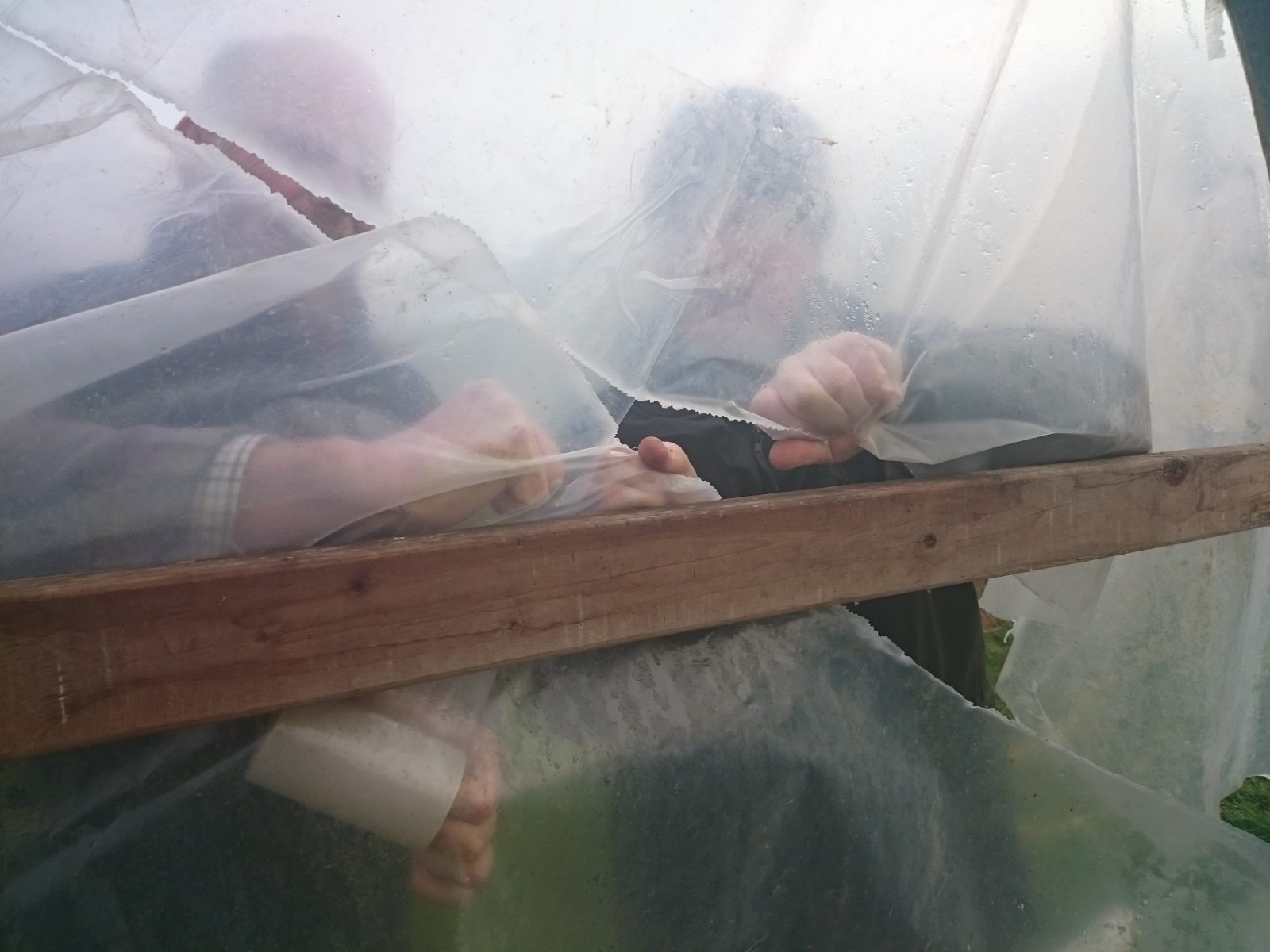
February 14, 2016
Storm Imogen damaged two of our polytunnels, which have large tears in the covers. Polytunnel doors were forced open by the sheer strength of the wind. It looks bad, but could have been a great deal worse.

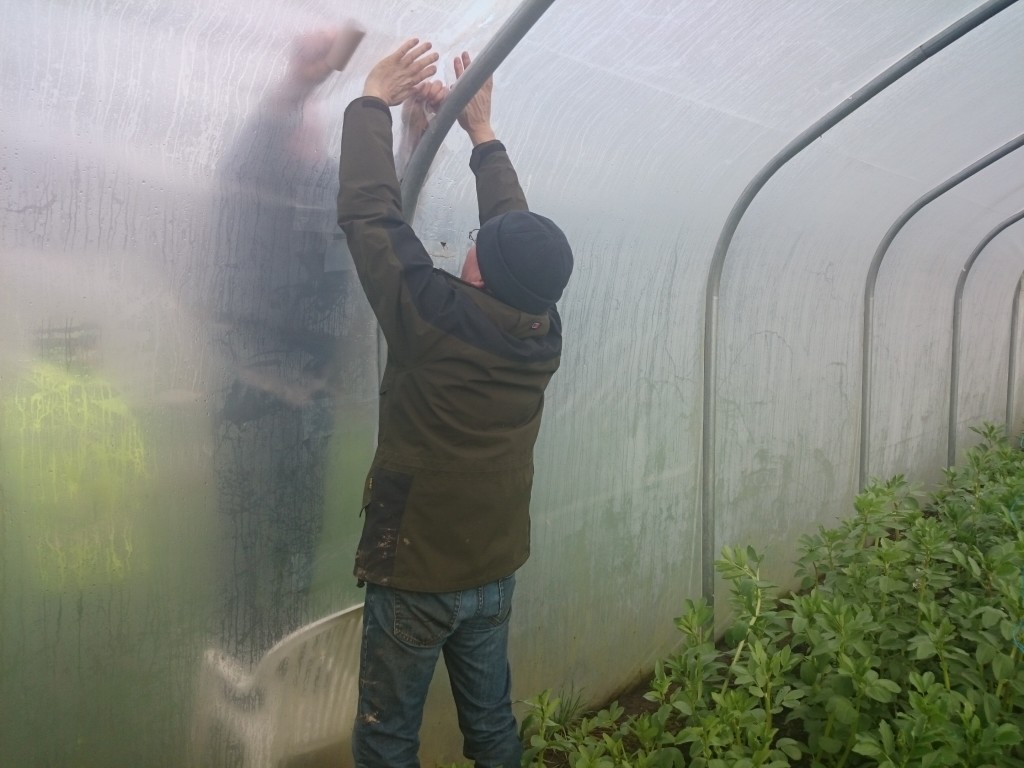

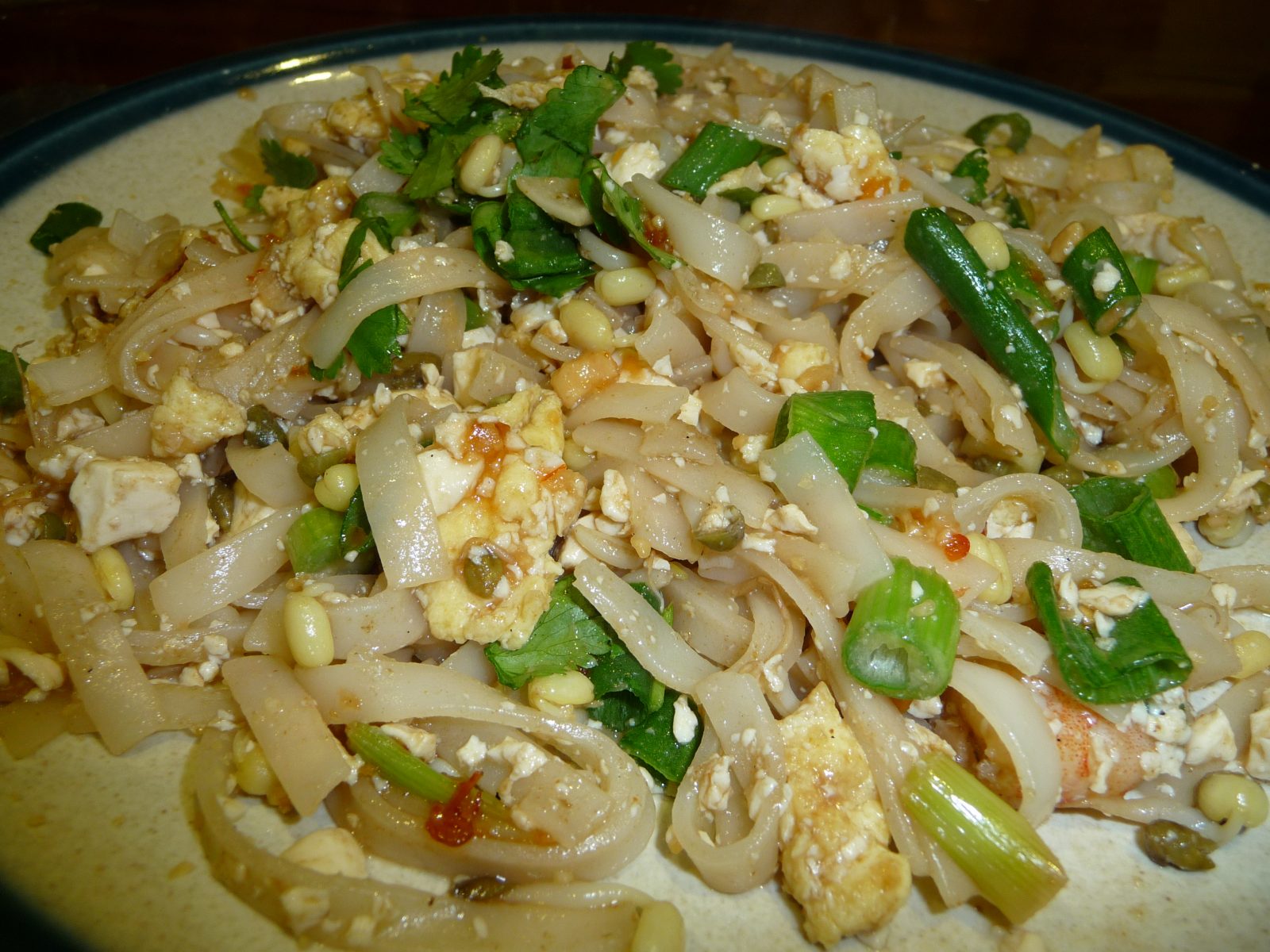
We have spring onions and home-grown bean sprouts in this week’s veg boxes. My husband Frank adapted Felicity Cloake’s perfect pad thai recipe as we were lacking several other ingredients! If you haven’t got palm sugar he recommends using soft brown sugar. If you want a vegetarian pad thai just leave out the prawns.
Serves 2
Preparation time: 30 minutes
Cooking time: 10 minutes
Ingredients
120g 2-3mm wide flat rice noodles
60ml fish sauce
60ml tamarind water (you can use tamarind concentrate, thinned with a little water)
60g palm sugar
Pinch of chilli powder, to taste
80ml groundnut or vegetable oil
2 cloves of garlic, finely chopped
100g firm tofu, chopped into small cubes
8 large prawns
2 large eggs, beaten with 1 tsp sesame oil
100g beansprouts
1 bunch spring onions, chopped
50g roasted peanuts, roughly chopped, lime wedges, chilli flakes, fish sauce and sugar, to garnish
Method
Cook the rice noodles as directed on the packet until pliable but al dente. Drain and rinse with cold water.
Meanwhile, make the sauce by combining the fish sauce, tamarind and palm sugar in a small pan. Heat gently to dissolve the sugar and taste – add more of any of the ingredients as you wish. Season with chilli to taste and set aside.
Lay out all the ingredients within easy reach of the hob in the order they’ll be used. Put a wok on a high heat and add half the oil. Add the beaten egg and stir fry until cooked, remove from the pan. Add the rest of the oil and the garlic and spring onions, stir fry for a few seconds. Add the prawns, stir fry until they are starting to turn pink, then add the beansprouts and tofu and stir fry for 30 seconds or so.
Add the noodles, the cooked egg and the sauce, then stir until heated through and the noodles are soft enough to eat. Serve with the garnishes for people to add as they wish.
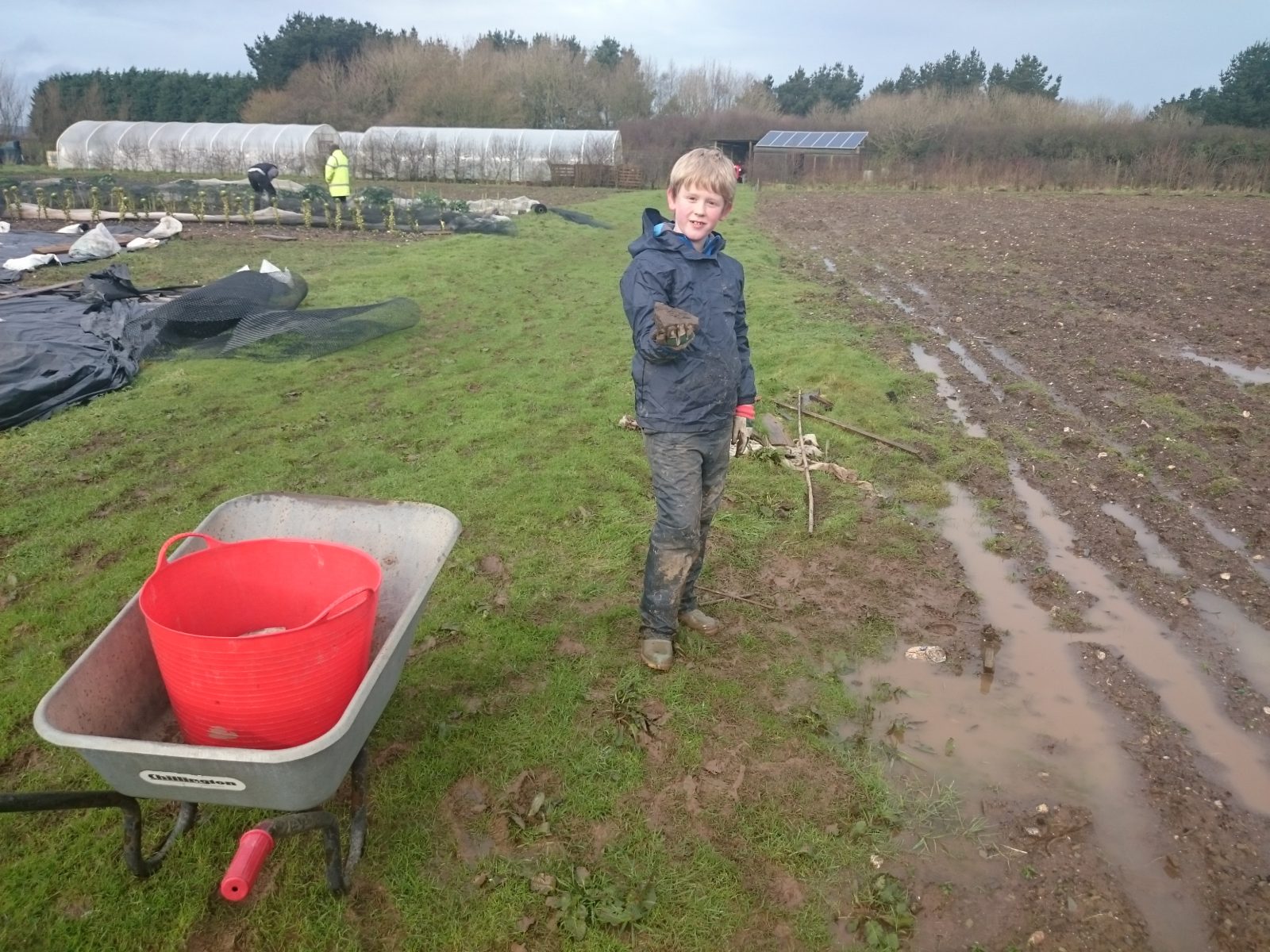
February 12, 2016
It’s exceptionally muddy on our site after Storm Imogen brought torrential rain and high winds to Cornwall.
In our weekly veg boxes today: –
*spring onions
*sprouted mung beans (Mark Norman, Bodmin)
*curly kale
celeriac (Restharrow Farm, Trebetherick)
cauliflower (Restharrow)
carrots (Restharrow)
potatoes (Burlerrow Farm, St Mabyn)
Standard boxes also have:-
extra potatoes
*Swiss chard or purple sprouting broccoli
*parsnips
red cabbage (Restharrow)
* = grown to organic principles
Please wash all vegetables and fruit. All produce grown by Camel CSA unless otherwise indicated.
Try celeriac in these roots dishes on Camel CSA’s recipes page:-
Three-root mash
Three-root boulangère
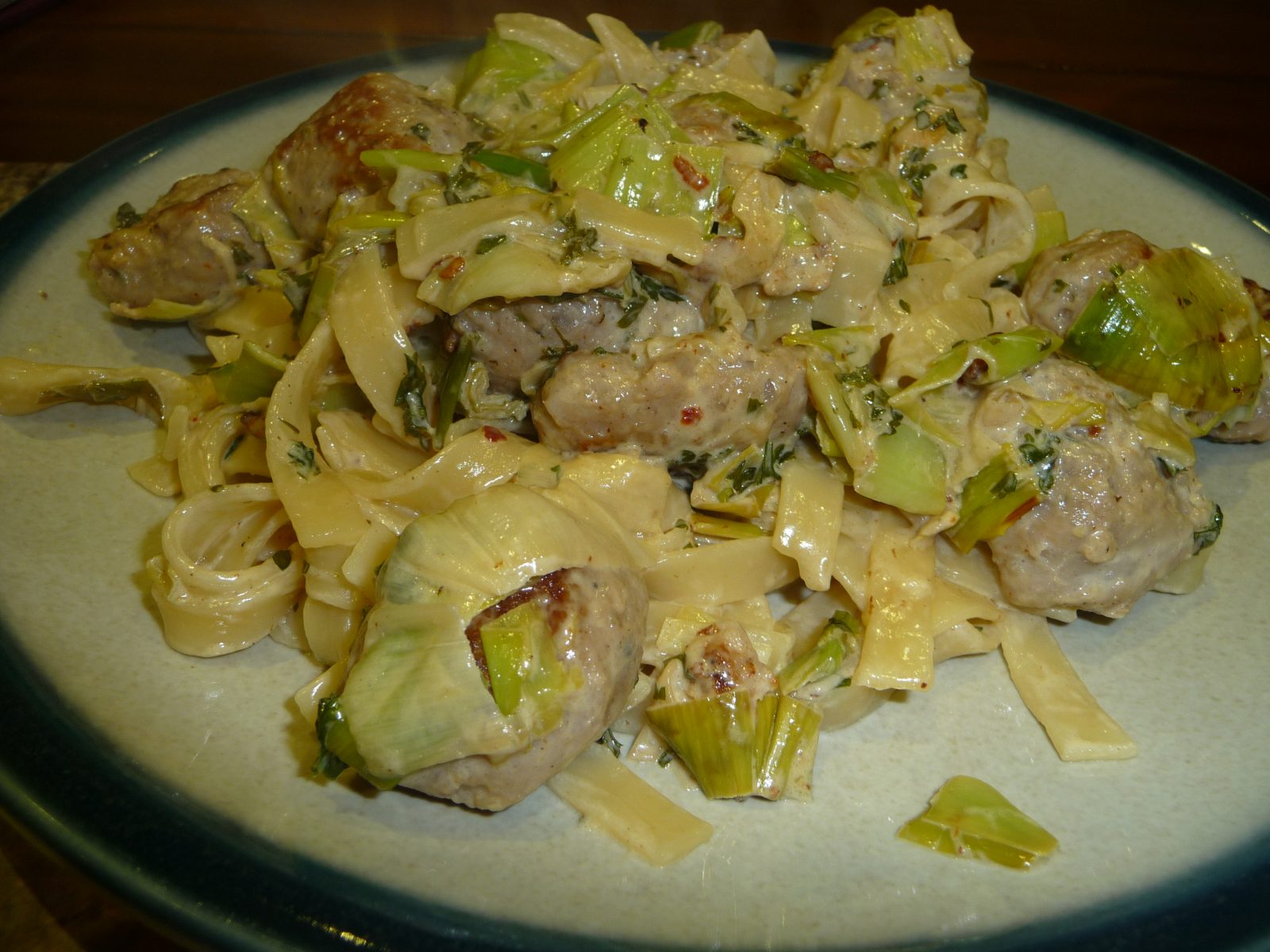
February 7, 2016
This recipe is taken from The Guardian in Nigel Slater’s midweek dinner series. I changed the quantities slightly as I find Nigel often uses too much cream for my tastes, missed out the dill as I didn’t have any and cut down on the amount of sausage. Still tasted good though!
Serves 2
Preparation time: 15 minutes
Cooking time: 25 minutes
Ingredients
6 butchers sausages
1-2 tsp dried chilli flakes
2 heaped tsp chopped fresh dill
1-2 leeks, sliced into 1 cm discs
2 Tbsp olive oil
150 g tagliatelle
100 ml double cream
salt and pepper
a handful of chopped fresh parsley
Method
Remove the sausage meat from the skins, place in a mixing bowl and mix with the chilli flakes and dill. Divide the mixture into small balls (I aim to get 4 balls from each sausage) and flatten slightly. Warm the olive oil in a shallow pan. Brown the balls on both sides then leave over a low heat, covered, until cooked right through – about 4-5 minutes.
Remove the balls from the pan, then add the leeks and let them cook in the pan juices for 7-8 minutes until soft and tender. Meanwhile, bring a large pan of salted water to the boil, cook the tagliatelle until tender, then drain.
Stir the cream into the leeks, season with salt, pepper and parsley then add the drained pasta to the leeks. Return the sausage balls to the pan and let everything bubble for a minute or so, then serve.

February 6, 2016
The mild, very wet weather in Cornwall continues to set challenges for vegetable growers everywhere as crops mature earlier than normal, causing potential shortages later on.
Fortunately our partnership with other growers like our own Mark Norman in Bodmin, Restharrow Farm at Trebetherick and Burlerrow Farm at St Mabyn means we can continue to fill the boxes while maintaining plenty of variety. And we do have veg coming on in the polytunnels plus plenty of onions in store!
In our veg boxes this week: –
*onions
*kale – cavelo nero
cauliflower (Restharrow Farm, Trebetherick)
leeks (Restharrow)
red cabbage (Restharrow)
beetroot (Restharrow)
potatoes (Burlerrow Farm, St Mabyn)
Standard boxes also have:-
extra potatoes
*pak choi
*green coriander
carrots (Restharrow)
* = grown to organic principles
Please wash all vegetables and fruit. All produce grown by Camel CSA unless otherwise indicated.

Try this red cabbage dish on Camel CSA’s recipes page:-
Henrietta’s winter salad

January 30, 2016
Bridget Gould, one of our professional growers, has recommended this recipe from Felicity Cloake in The Guardian. Looks like Sunday lunch is sorted in our household!
Serves 4
Preparation time: 15 minutes
Cooking time: 45 minutes
Ingredients
800g peeled and seeded pumpkin or squash
2 carrots, about 200g, peeled
4 Tbsp extra-virgin olive oil
1 onion, thinly sliced
1 1/2 tsp smoked paprika
400g tin of plum tomatoes
100g red lentils
small bunch of coriander
Method
Heat the oven to 200°C/gas mark 6. Cut the squash and carrots into chunks about 4 cm square and toss with a little oil. Spread out on a baking sheet and cook for about 30 minutes until tender and very slightly charred.
Meanwhile, heat 2 tablespoons of oil in a large saucepan over a medium-low heat and cook the onion until soft, golden and beginning to caramelise. Stir in half a teaspoon of paprika and cook for another minute or so, then tip in the tomatoes and mash up. Stir in the lentils and about a litre of water and bring to the boil, then turn down the heat and simmer for about 20 minutes, until the lentils are soft.
Add the roasted vegetables to the pan and take off the heat. Whisk together the remaining teaspoon of paprika with the remaining tablespoon of oil and a pinch of salt. Puree the soup and season to taste, adding a little more water if you prefer it thinner. Roughly chop the coriander. Divide between bowls and drizzle over the paprika oil. Top with coriander and serve.

January 22, 2016
No more Cornish rain and less mud! At least for a little while. Our volunteer picking and packing team has been blessed with two consecutive dry, sunny Fridays to harvest and weigh out the vegetables.
In all our veg boxes this week: –
*turnips
*onions
*Jerusalem artichokes (Mark Norman, Bodmin)
cauliflower (Restharrow Farm, Trebetherick)
leeks (Restharrow)
cabbage (Restharrow)
potatoes (Burlerrow Farm, St Mabyn)
Standard boxes also have:-
extra potatoes
*kale – Red Russian
*purple sprouting broccoli
parsnips (Restharrow)
* = grown to organic principles
Please wash all vegetables and fruit. All produce grown by Camel CSA unless otherwise indicated.
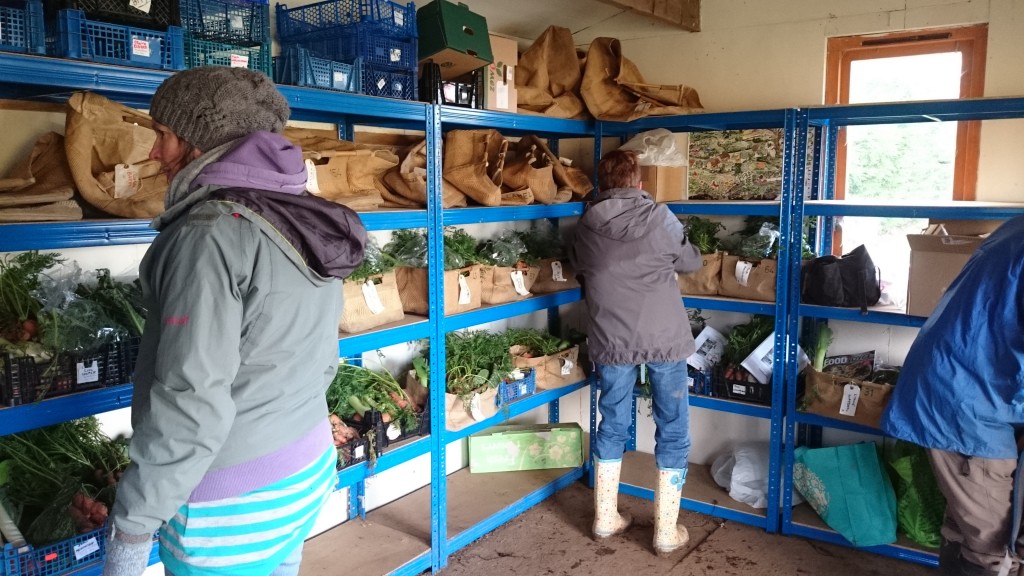
Try these delicious Jerusalem artichoke dishes on Camel CSA’s recipe page:-
Palestine soup
Casserole of artichokes and pork
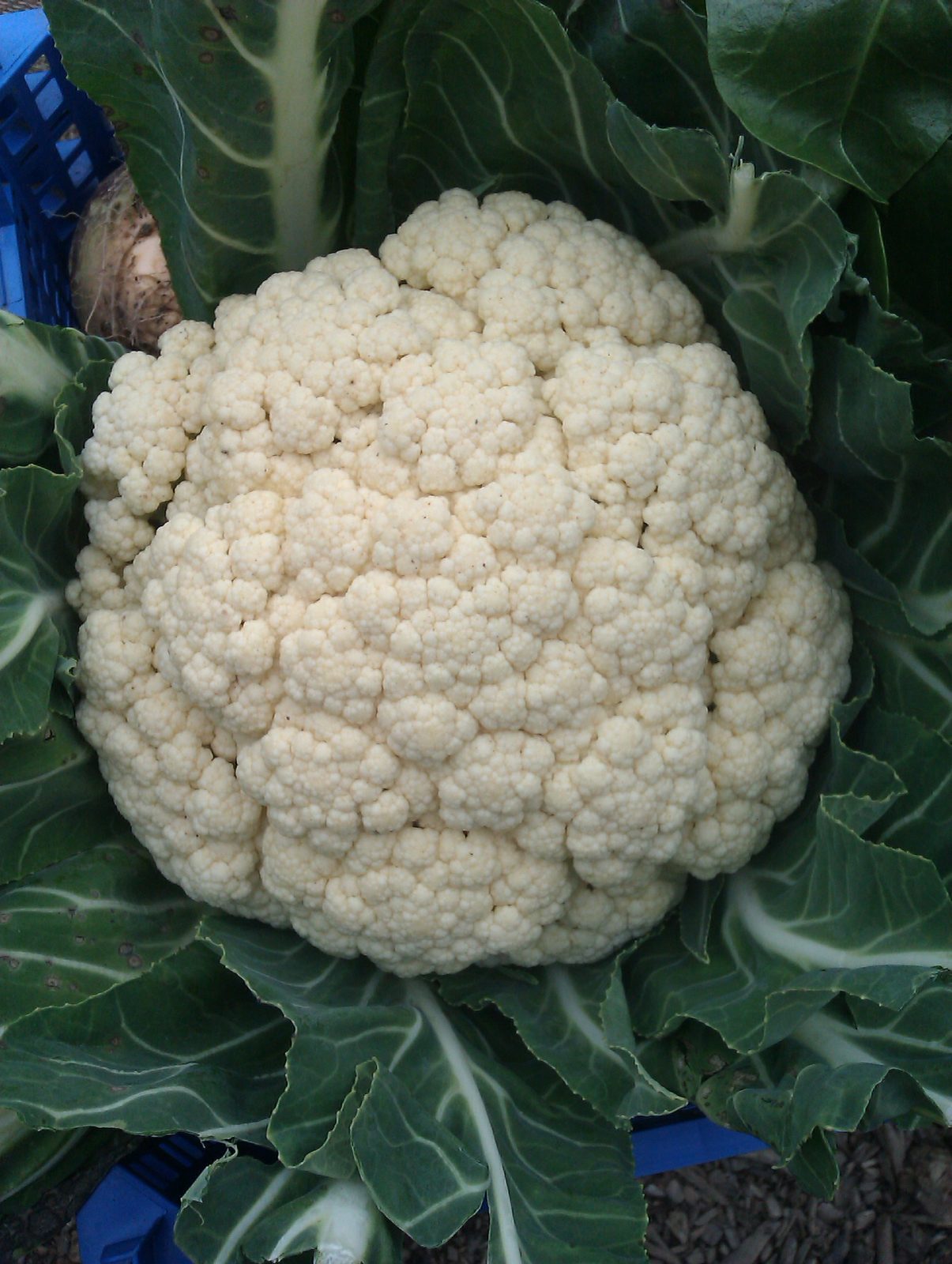
January 17, 2016
I sometimes like to serve cauliflower cheese with rice – I think this goes back to a college refectory which sold inedible jacket potatoes but there was always rice to accompany the daily curry! This recipe seems to combine the cauliflower cheese and the rice in one dish. It is taken from Paola Gavin’s classic Italian Vegetarian Cookery.
Serves 4-6
Preparation time: 40 minutes
Cooking time: 20-25 minutes
Ingredients
1 medium cauliflower
1 Tbsp olive oil
1 small onion, finely chopped
1 tsp parsley, finely chopped
175 g long grain rice
450 ml boiling stock or water
1/2 tsp salt
25 g butter
40 g freshly grated Parmesan cheese
350 ml bechamel sauce (made with 30 g butter, 25 g flour, 300 ml hot milk, salt, pepper and freshly grated nutmeg)
40 g grated Gruyere cheese
Method
Cut away the stem of the cauliflower and break the curd into florets. Steam for 10 minutes or until tender.
Heat the olive oil in a small saucepan and cook the onion and parsley over a moderate heat for 3 minutes. Stir in the rice and cook for one minute, so each grain is coated with oil. Add the boiling stock or water and salt, cover and simmer for 8-10 minutes until the rice is tender but still firm. Remove from the heat and stir in the butter and 25 g of the grated Parmesan cheese.
Prepare the bechamel sauce, remove from the heat and stir in the Gruyere cheese.
Spread a layer of rice in the bottom of a well-buttered shallow baking dish. Spoon a little of the cheese sauce over the rice. Cover with a layer of cauliflower. Repeat the layers, ending with the cheese sauce. Sprinkle the top with the remaining grated Parmesan cheese and bake in a preheated oven at 190°C/Gas mark 5 for 20-25 minutes or until the top is golden.

January 15, 2016
In all the veg boxes this week: –
*kale – red Russian OR curly
*onions
*carrots
cabbage – red OR green
leeks (Restharrow Farm, Trebetherick)
cauliflower (Restharrow)
potatoes (Burlerrow Farm, St Mabyn)
Standard boxes also have:-
extra potatoes
*pak choi
*beetroot
swede (Restharrow)
* = grown to organic principles
Please wash all vegetables and fruit. All produce grown by Camel CSA unless otherwise indicated.
Try these Indian-inspired kale dishes on Camel CSA’s recipe page: –
Kale and chickpea curry
Dahl with kale
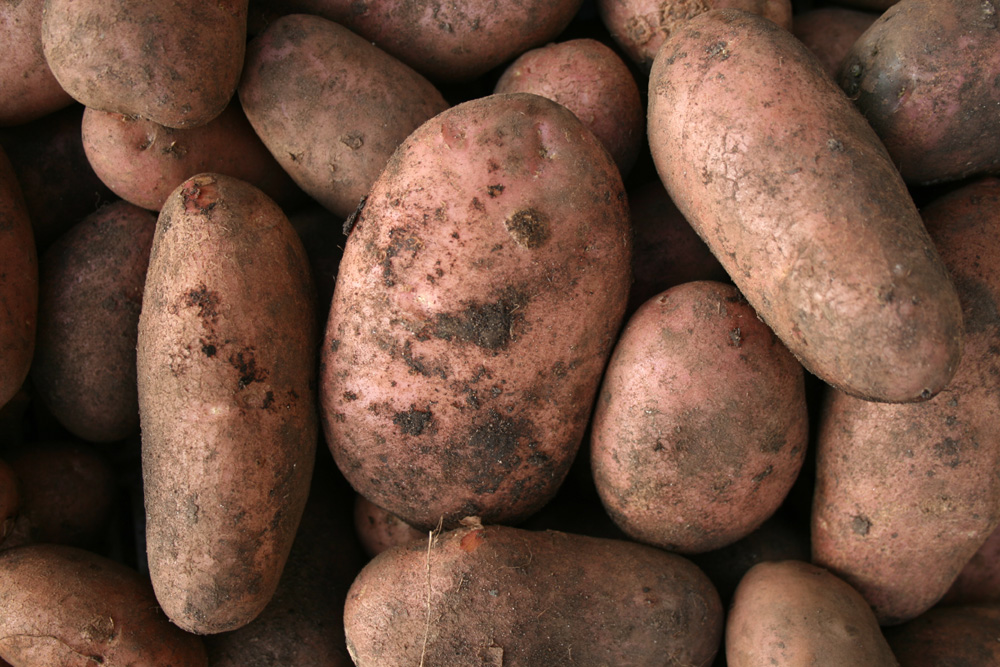
January 10, 2016
This soup sounds just right for the cold weather that is being predicted to arrive this week. This recipe is from Rachel Roddy’s Kitchen Sink Tales column in this week’s Guardian Cook supplement.
She says: “One thing I will stress the importance of is the extra virgin olive oil, with its grassy scent and seductive mix of butteriness and bitterness. It really is the fragrant foundation of this dish … treat it as a key ingredient.”
Serves 4
Preparation time: 10 minutes
Cooking time: 30-40 minutes
Ingredients
1 onion, diced
1 stick celery, diced
1 carrot, diced
a sprig of rosemary or 2 bay leaves
600g potatoes, peeled and cut into chunks
6 tbsp extra virgin olive oil
1.4 litres water or light stock
170g pasta (quadrucci, pastina, farfalle or broken spaghetti)
salt and black pepper
Pecorino or parmesan, grated
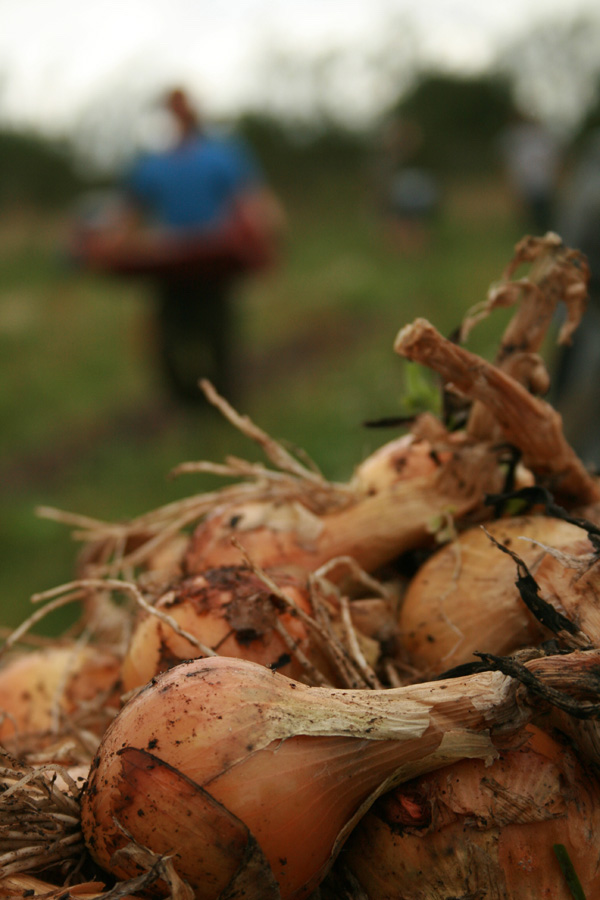
Method
Warm the olive oil in a heavy-based saucepan over a medium-low heat. Fry the onion, celery and carrot, along with a pinch of salt, until soft and translucent. Add the rosemary of bay leaves and the potatoes, stirring so each chunk is coated with oil and fry for a couple more minutes.
Add the water or stock and another small pinch of salt, bring to a lively simmer, then reduce to a gentle simmer for 15 minutes or until the potato is very soft – you can break it up slightly with the back of a wooden spoon. Add the pasta, raise the heat slightly and cook for another 10 minutes, or until the pasta is cooked, stirring and adding a little more water if it looks too thick.
Taste for salt (remembering you are probably going to add salty cheese) and grind over some black pepper. Serve with some grated pecorino or parmesan stirred in, or simply a streak of olive oil.


